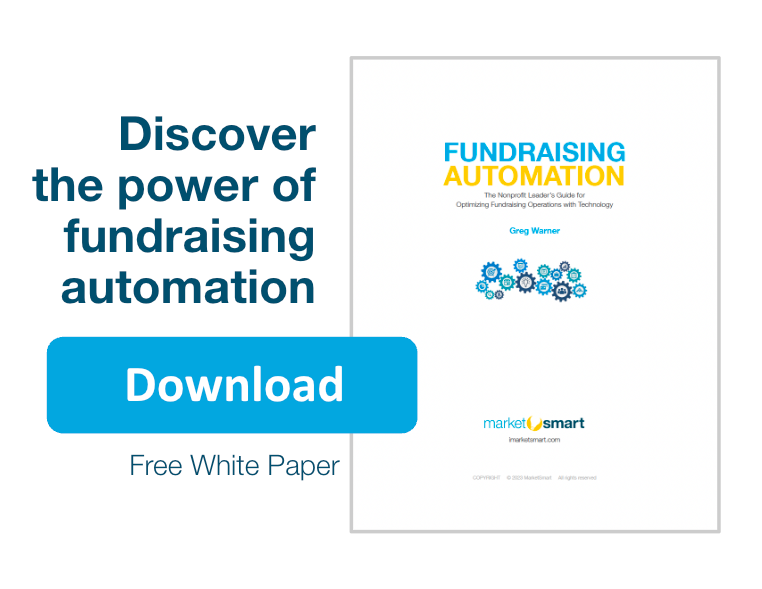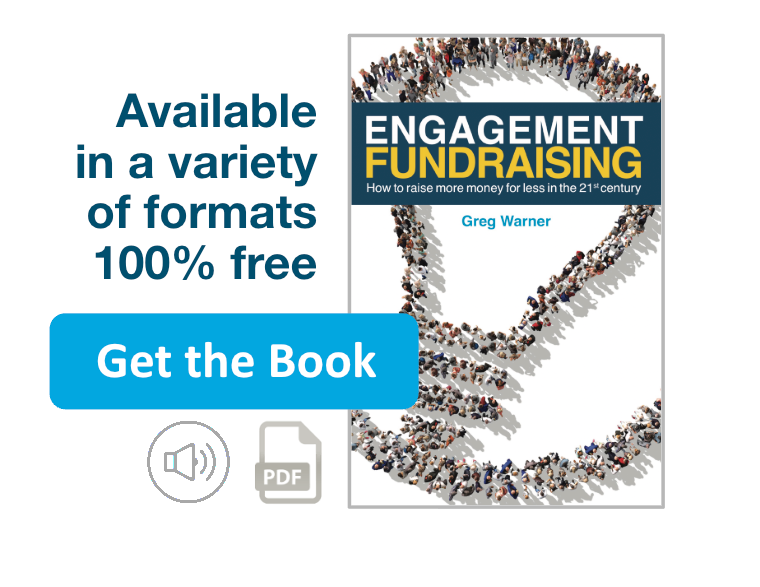76/10, not 80/20!
Last year the Congressional Budget Office released a report about wealth in the United States. Here are some points to consider:
- The top 10% of families held 76% of total wealth in the U.S.
- The average was $4 million net among the top 10% of families after paying off debts
- The bottom 51st% to 90th% accounted for only 23% of total wealth
- The entire bottom 50% of the U.S. population holds just 1% of the wealth in the U.S.
This backs up another report that found that 44% of Americans live in “asset poverty” with just 3 months worth of savings. In other words, you can stop targeting almost half of the people in America with your fundraising efforts.
It also means that the 80-20 Rule is dead. I guess now it should be called the 76-10 Rule.
Where are you focusing your acquisition and retention efforts?
If your plan is to move people up the pyramid, you’ll have a hell of a hard time doing that with people in the bottom 50% (with no liquidity or assets).
Here’s an idea: Aim to acquire people with wealth!
Then, once you acquire those new WEALTHY donors, survey them to determine:
- If they really have assets (and wealth)
- How old they are
- If they are highly educated
- Whether or not they have a donor-advised fund or family foundation
- Why they care
- Who inspired them to be concerned about your mission
- What assets would they like to give
- How would they like to give them away
- And more
It ain’t rocket science.
The amazing thing is that the wealthy want to build a relationship with you and your organization. They want to give. But you have to understand who they are and what motivates them first. Then you need to cultivate the relationship with personalized, relevant, highly contextual communications.
Related Posts:
>> Is Your Nonprofit Marketing Budget Properly Aligned with the 80/20 Rule?
>> Focus!
>> 3 Real World Examples of the Pareto Principle





Well comrade Warner, I think it is even worse than that when we go beyond your borders.
Eight (8, as in 2 less than 10) people own the same wealth as half of the world’s population.
Here in Australia, 1% of our people (about 23,000 people) own 22% of Australia’s wealth.
On the fundraising maths side…
80/20 is still about right when we look at mainstream charities (ie removing the massive capital campaigns that mostly go to arts and education).
Here in Australia we see the top 20% give around 73% of revenue. It is likely similar in USA.
But more pertinent to you point is Pareto Squared, or 64/4.
Theoretically, applying the the Pareto principle (80/20 rule) twice says that 80% of 80% of revenue should come from 20% of 20% of donors. In other words, 64% of revenue from 4% of donors. In actual fact, it is about 46% of revenue coming from 4% of donors to classic charities here. Even if we take monthly donors out, it only comes up to 46%.
This tells me that your article is completely nailing it. Basically, the spread of wealth in the population is MORE extreme than the Pareto Principle, but the spread of donations (to non-arts and non-university charities anyway) is LESS extreme than the Pareto Principle. So, we outside of arts and education are UNDERPERFORMING in getting big gifts.
Full data on this here
https://www.moceanic.com/blog/2016/how-accurate-is-the-pareto-principle/
Check out Oxfam America report here
https://www.oxfamamerica.org/take-action/campaign/extreme-inequality-and-poverty/extreme-inequality-is-exploding-now-is-the-time-to-act/
And Oxfam Australia here
https://www.oxfam.org.au/what-we-do/inequality/find-out-more/
Good stuff Sean. Right on! Thanks!
[…] anticipate seeing 80% of campaign gifts coming from 20% of all donors. What they used to call the 80-20 rule of thumb has changed, however, in tandem with growing economic inequality. Today, nonprofits raise closer to […]
[…] anticipate seeing 80% of campaign gifts coming from 20% of all donors. What they used to call the 80-20 rule of thumb has changed, however, in tandem with growing economic inequality. Today, nonprofits raise closer […]
[…] would expect all donors to see 20 out of 20 campaign gifts coming from. Which they used to say. 80-20 Principles. However, together with that has changed Growing economic inequality. Today, nonprofits grow closer. […]
[…] anticipate seeing 80% of campaign gifts coming from 20% of all donors. What they used to call the 80-20 rule of thumb has changed, however, in tandem with growing economic inequality. Today, nonprofits raise closer to […]
[…] anticipate seeing 80% of campaign gifts coming from 20% of all donors. What they used to call the 80-20 rule of thumb has changed, however, in tandem with growing economic inequality. Today, nonprofits raise closer to […]
[…] anticipate seeing 80% of campaign gifts coming from 20% of all donors. What they used to call the 80-20 rule of thumb has changed, however, in tandem with growing economic inequality. Today, nonprofits raise closer to […]